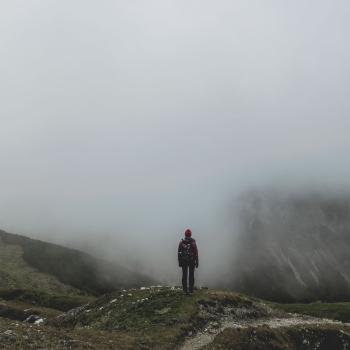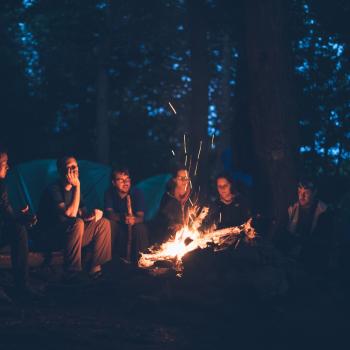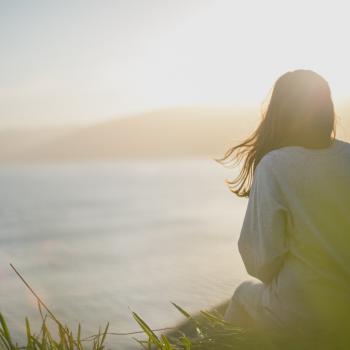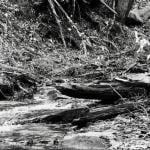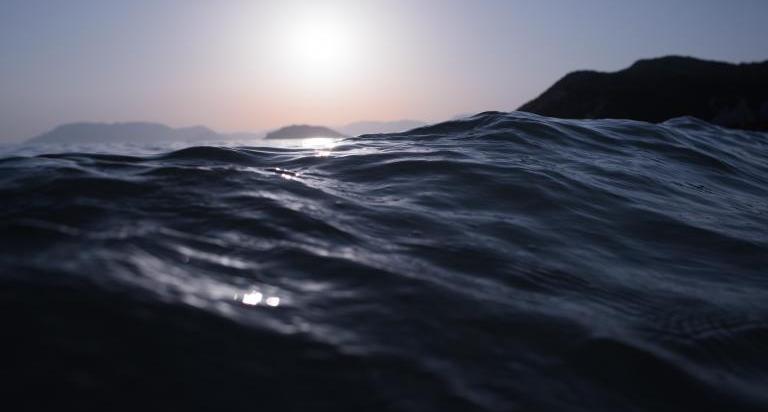
About a month ago, I shared this hugely impactful story from my life. This is a follow-up to that story.
So, what do I really mean when I refer to the act of sinking?
Imagine a large body of crystal clear water–the kind just calling for you to dip your toes into. The surface takes your breath away and you could stand at its edges all day long. And yet if you look closely, you can see that it is bottomless; it just keeps going down, further and further, until the darkness overcomes your ability to see anything. It is both wondrous and terrifying; who knows what’s down there?
If you’ve ever been to Yellowstone, perhaps think of the beautiful blue color of some of the hot springs, but without the rancid smell and promise of certain death. (This might be where the imagery breaks down.)
Anyway – imagine that this body of water is inside you, a deep inner spring that you can choose how to engage with. Perhaps you will simply watch the beauty of its surface or get close enough that you can see your own reflection. Or maybe you will sit on the edge and let your legs dangle and move along with its gentle rhythms.
Mirabai Starr speaks of this inner spring as a sanctuary we can enter into:
“There is a secret place. A radiant sanctuary. As real as your own kitchen. More real than that. Constructed of the purest elements. Overflowing with the ten thousand beautiful things. Worlds within worlds. Forests, rivers. Velvet coverlets thrown over featherbeds, fountains bubbling beneath a canopy of stars. Bountiful forests, universal libraries. A wine cellar offering an intoxication so sweet you will never be sober again. A clarity so complete you will never again forget.
This magnificent refuge is inside you. Enter. Shatter the darkness that shrouds the doorway. Step around the poisonous vipers that slither at your ferret, attempting to throw you off your course. Be bold. Be humble. Put away the incense and forget the incantations they taught you. Ask no permission from the authorities. Slip away. Close your eyes and follow your breath to the still place that leads to the invisible path that leads you home.” (Starr, Interior Castle, 2)
Sinking into the Unknown
For some of us, this is simply too much. Rather than give our attention to the interior landscapes within us, we instead opt to “skim over the surface” as James Finley said on that day in the auditorium. The unknowns that are held within our depths are too terrifying and too challenging to reckon with while living in the midst of a world that feels tenuous enough already.
We are afraid that if we slow down and take the time to be with ourselves, fully present to what lies within, we might find something that will dislodge us – destabilize us – from our current sense of who we are; that we might lose grasp on what little certainties we think we have and be forced to really grapple with the stories we tell ourselves about ourselves.
Mystics and poets and prophets from across spiritual traditions share of what this water means for us. And they don’t hold back; they aren’t naive or overly sentimental. They know the act of sinking is a treacherous path to choose. Teresa of Ávila and Mirabai Starr speak of the vipers that will slither along with us; Rumi speaks of the wounds that we must give witness to; John of the Cross states simply that we must close our eyes and walk in the dark.
And yet they issue to us a beckoning call from beyond the limitations of time and space, inviting us to fully immerse ourselves in the waters of our inner life. For them, the dangers are well worth it because to sink is to become more fully alive to the essence of who one is and the Divine presence within them.
To sink is to become in touch with our own inherent dignity, a wondrously counter cultural act in a society where our worth and wellbeing are so often under attack by systems of power and the power hungry. To sink is to intentionally give ourselves permission to explore our innermost being, to swim within the waters of our heartspace (some might call this soul), trusting that we might touch upon something so beautiful – so true – that we will never see ourselves or the world in the same way again.
Use my Wisdom for the Moment teaching generator to receive a teaching for how you’re feeling right now.
Pick up my free resource Wisdom Teachers + Body Practices to Guide Us here.
Get my Quick Guide to Engaging a Contemplative and Embodied Spirituality.








